Symphonic Forms 1947
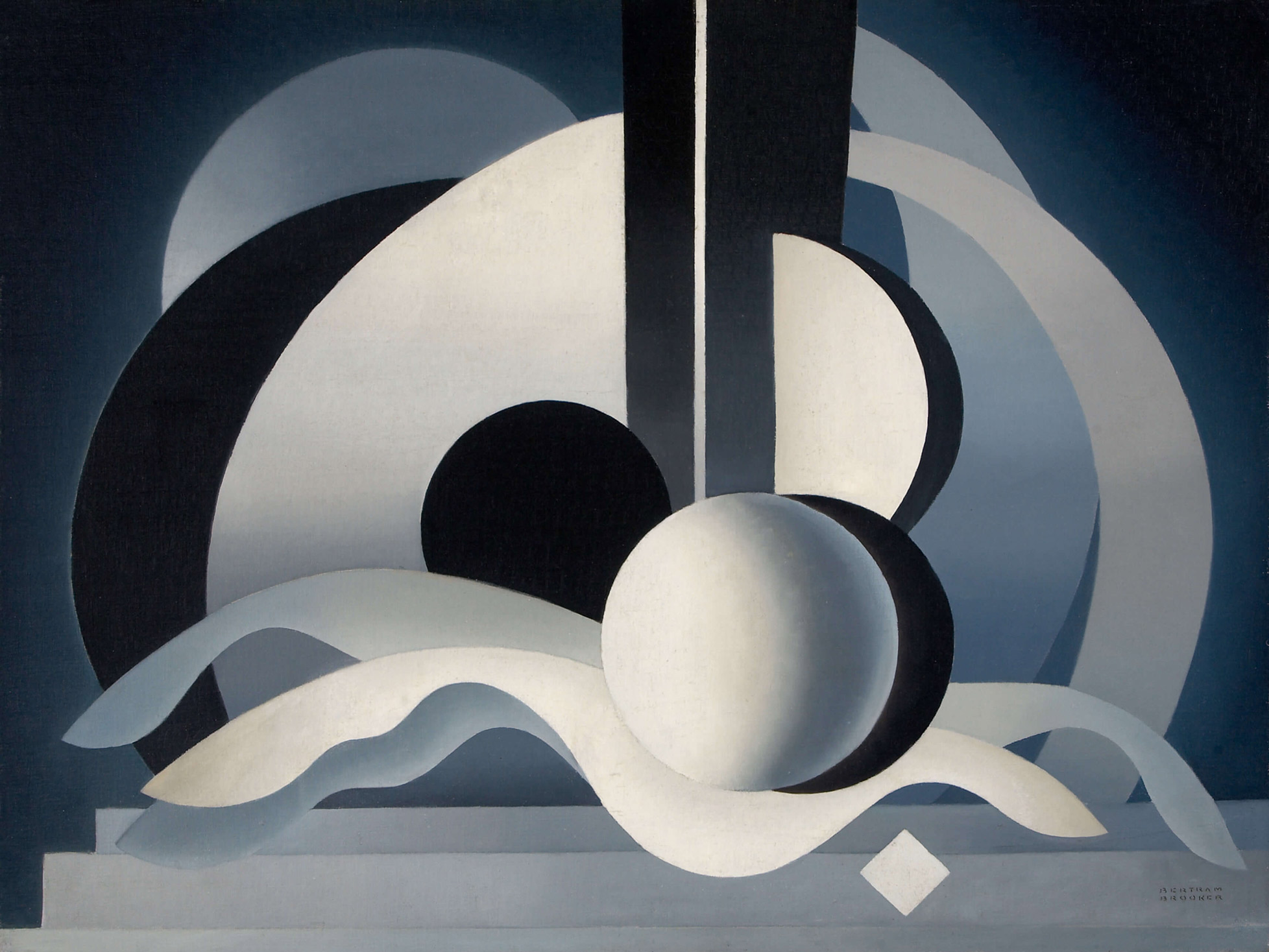
Bertram Brooker, Symphonic Forms, 1947
Oil on canvas mounted on Masonite, 68.7 x 91.2 cm
Art Gallery of Hamilton
Symphonic Forms belongs to a third and final group of abstracts painted by Brooker and is the finest in that small body of work. Much more than Brooker’s early experimental temperas (as in Oozles, c.1922–24) and the large colourful abstracts of 1927 to 1931 (as in Sounds Assembling, 1928), this picture resembles a sculpture. The colours are muted and the shapes are precisely arranged. There is a sharp, visual conflict between the ball-like sphere (and its shadow) and the two organic shapes near which it floats. This interaction is placed in front of what looks like an elaborate stage set. There is also a strong vertical downward movement in the middle of the background. In contrast to his previous abstracts, the composition of this work is much more relaxed and peaceful.
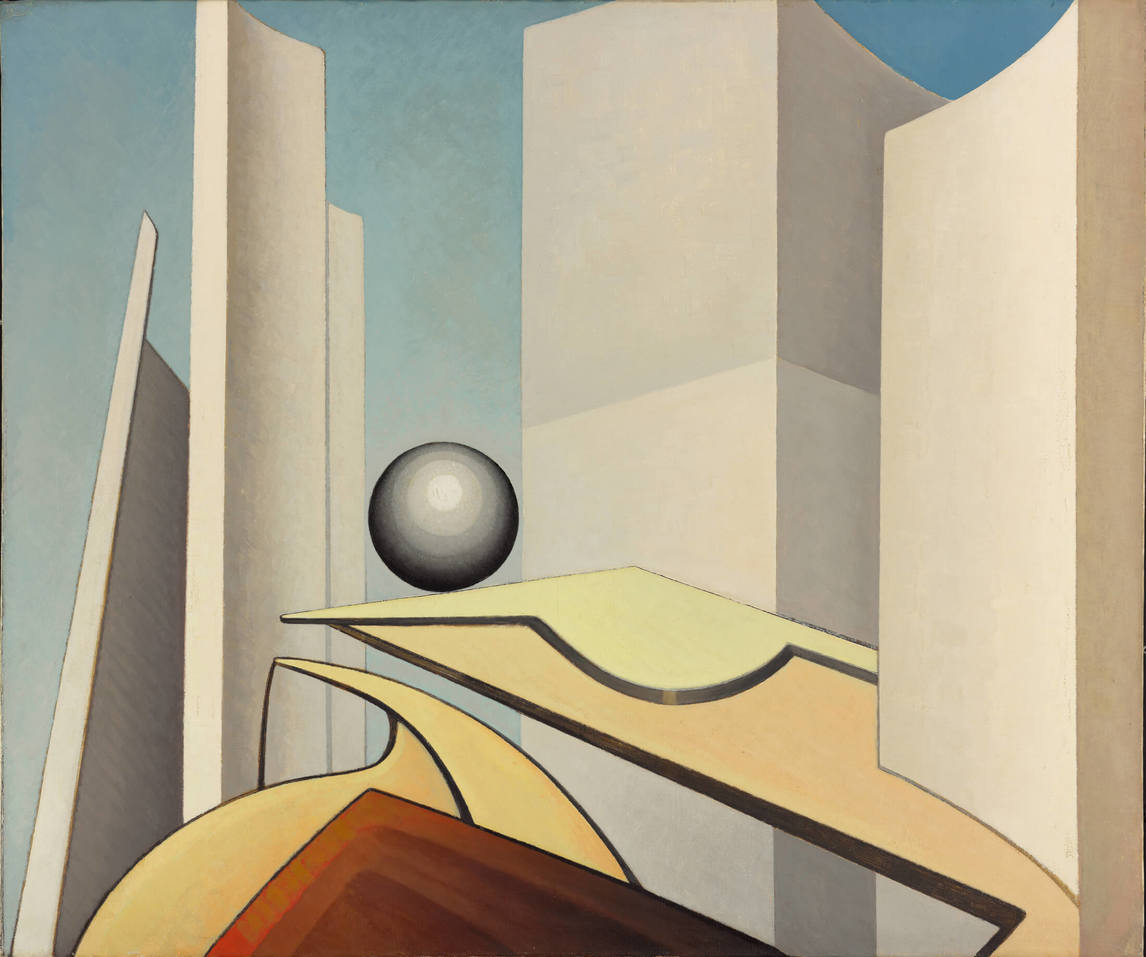
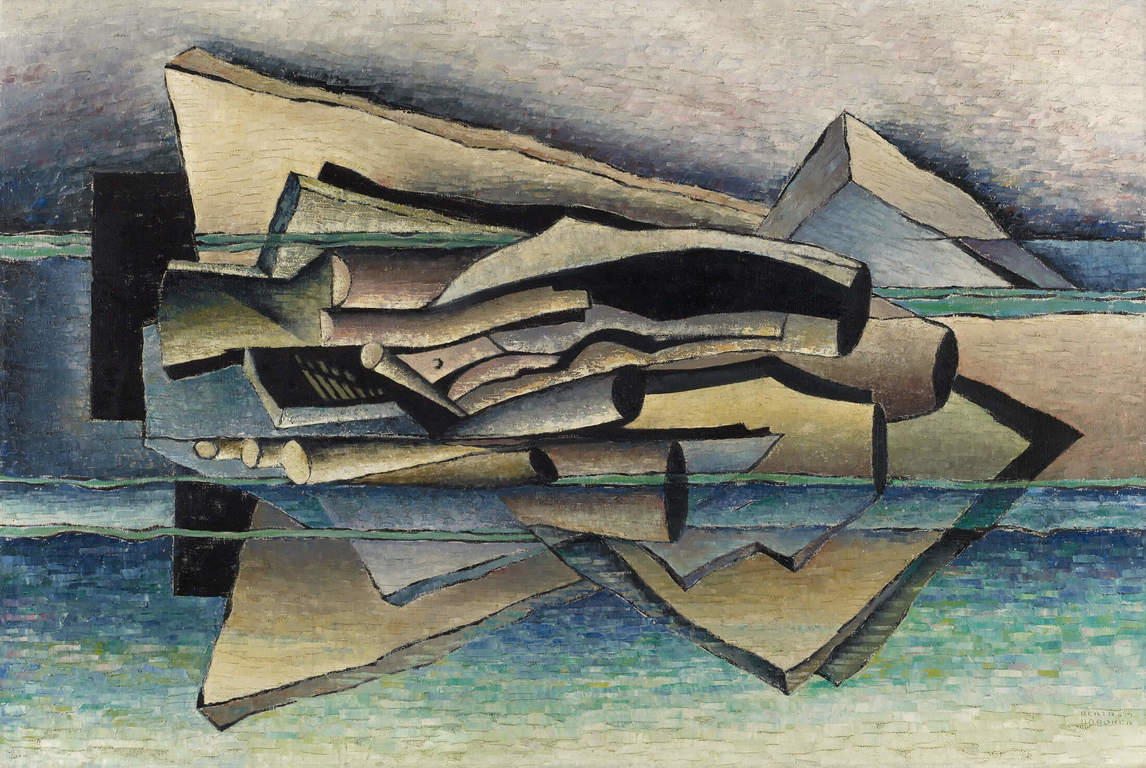
Brooker’s abstractions from 1927 to 1931 had been deliberately confrontational and complex in the juxtaposition of shapes; this canvas has a much gentler, more reticent air, which is enhanced by the cool colours. The composition can be seen as “symphonic” in the sense that it seems to be segmented into various parts, or movements. The musical inspiration must have been a tranquil one. Symphonic Forms was one of Brooker’s last stabs at creating a pure abstraction. Although a later work, Progression, 1948, is composed of assorted layers of horizontal forms, it is recognizably a landscape constructed of abstract shapes.
Symphonic Forms owes a great deal to the type of streamlined Art Deco design that had been popular in the 1930s. In general, Canadian artists did not respond to the abstract qualities that could be extracted from Art Deco, although Lawren Harris (1885–1970) had painted Poise (Composition 4), 1936, the lone abstract in his canon that appropriates similar design elements. As a movement, Art Deco design incorporated the idea of a new, optimistic world order. Brooker may have appropriated it here to suggest the same about the visual symphony he has created.

 About the Author
About the Author
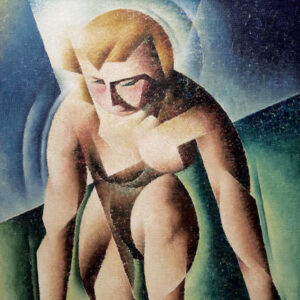 More Online Art Books
More Online Art Books
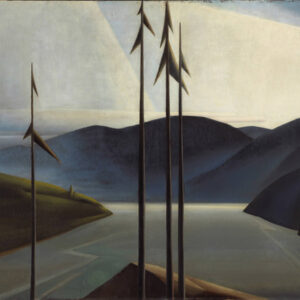 Acknowledgements
Acknowledgements